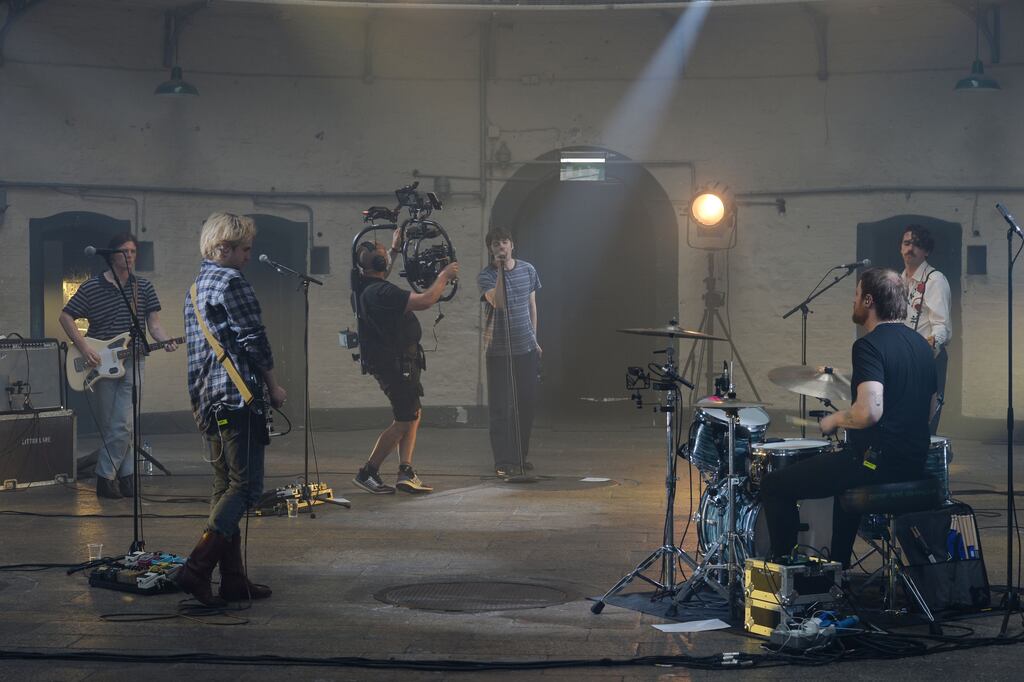A year ago, as Ireland’s Covid-19 vaccination programme finally began to roll out, the internet was our main way of engaging with the arts.
I wrote a column back then arguing that organisations needed to move away from all the free events of the time, which risked devaluing arts performances and setting a longer-term expectation of non-payment. I also thought it was important for artists and arts organisations to begin to seriously consider the opportunities, in the longer term, of making an online strategy part of arts development — a chance to reach out to new audiences, and hang on to audiences unable or unwilling to attend events in person.
We’ve come a long way from some of those initial clumsy internet implementations, with amateur sound and lighting, streaming glitches and inadequate online viewing platforms. Now, plenty of ways exist to stream an event.
The problem is, people’s interest in online events has apparently declined steeply, according to people I talk to across the arts sector in Ireland and elsewhere. And despite some people’s excited social media posts about attending live events again, audiences haven’t really recovered.
An easy assumption is that this is primarily an issue with older, more Covid-wary audiences. But I’m hearing that audience losses stretch across all ages.
Figures can be hard to come by. An April survey of more than 6,000 people by UK-based The Audience Agency — part of an ongoing pandemic project funded by the UK’s Arts and Humanities Research Council — found that under-25s were the most likely to return to live events, and over-65s and people with disabilities the least. But only 39 per cent of people overall were willing to return to live performances.
It’s also easy to guess that older arts lovers might be less comfortable engaging with digital technologies. But again, what I’m hearing is that virtual options for events, regardless of the age bracket expected, just aren’t drawing audiences now. As a result, many organisations are cutting back or discontinuing online and hybrid offerings, but not because they feel audiences might shun live for virtual — audiences are opting for less of both.
Serious problem
This poses a serious problem for a sector already battered by two years of a pandemic with no definitive end in sight. Most venues need at least 50 per cent capacity to break even, and many performances aren’t hitting that level.
As for online events, the fall-off in this area surprised me. I’ve missed live events, but I’ve loved attending a huge variety of virtual offerings in the past two years. And much pandemic-era arts coverage talks about “a digital revolution”.
Yet the Audience Agency survey suggests we’ve overestimated the pandemic attraction of digital. Only 45 per cent of those surveyed said they’d engaged with arts and culture online during the pandemic, “weighted towards audiences who are younger, typically high cultural engagers anyway, or disabled”. Most popular were activities classified as a “performance/event”, following by “a virtual tour/online exhibition”.
However, especially striking was this: “It should be noted that across nearly all online activities, the same percentages of respondents said they were doing this before the pandemic.” The one exception was in watching a live or recorded performance online, but that only jumped a tiny bit, from 23 to 28 per cent.
The decline in digital is a disappointment in other ways. So many, including me, thought the global embrace of live-streamed events would galvanise the arts and drive new and creative ways of utilising digital technologies, virtual spaces and virtual audiences. However, for the most part, online was simply utilised as a delivery mechanism for a conventional, televisual broadcast.

Often that’s perfectly fine, though, as so many artists and organisations quickly discovered, not exactly cheap. A decent stream needs more than an iPhone pointed at a performer. Now, the cost of properly streaming a hybrid event can easily eat up any profit from modest live ticket sales.
So what next? Culture Ireland, which promotes Irish culture abroad, said in March that it was committed to virtual events as part of its strategy through 2025, which makes sense for international engagement. Closer to home, in a world that has pivoted to remote working and staying local, online cultural offerings would seem an obvious part of any arts mix.
But I think audiences will want more than just a limited replication of a live performance, streamed into their homes. We know already that this is not inspiring audiences to engage right now, hence the online audience losses.
To be fair, the arts and its audiences have only had two years to respond to enormous, pandemic-driven shifts. But the arts can’t keep looking back to 2019, nor use digital to simply replicate, in a truncated form, analogue. Digital offers enormous room for rethinking every aspect of performance and audience engagement. It’s a daunting task, but the pandemic has shown us that the survival and future growth of the arts sector will demand not just meeting but embracing this creative challenge.

















